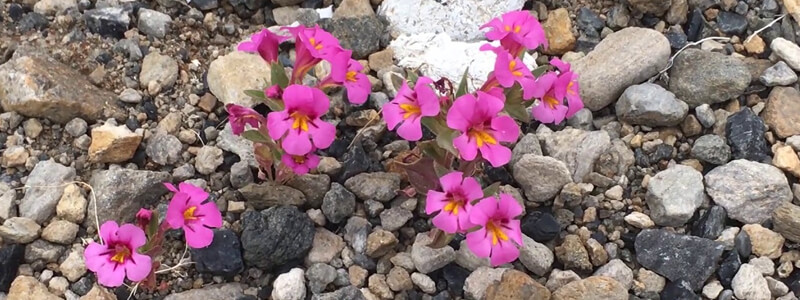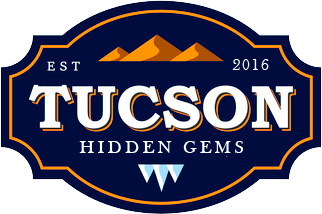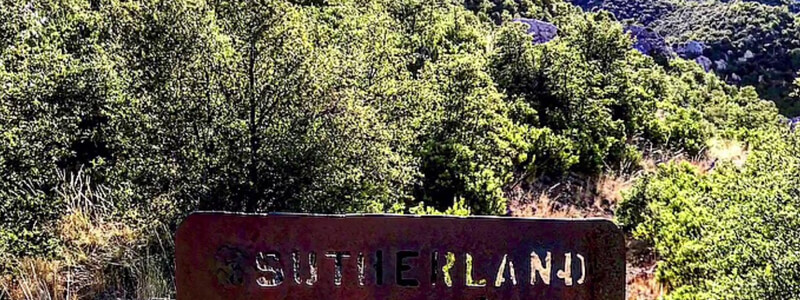Winter rain in the Sonoran Desert produces stunning spring wildflower blooms. One of the best displays can be found close to downtown Tucson, Arizona.
The Sonoran Desert covers more than 100,000 square miles of California, Arizona, and Mexico. Far from being desolate and lifeless, the desert teems with plant and animal life. More than 2,000 species of native plants can be found in the Sonoran Desert. Photogenic cactus flowers are stunning, but nothing is quite as breathtaking as sweeping fields of multi-colored wildflowers. Flower production is tied to winter rains, and when rainfall is better than average, the spring wildflower bloom is magnificent.
Catalina State Park near Tucson, Arizona
Just 25 miles north of downtown Tucson, and lies well within the city’s metropolitan area, Catalina State Park is a suburban treasure. Arizona is known for its national parks, including the Grand Canyon, Saguaro, and Petrified Forest. Less well-known, but often just as rewarding, are the state parks. Catalina State Park covers 5,500 acres in the foothills of the Santa Catalina Mountains. The rocky terrain of the park slopes upward toward the 9,157-foot peak of Mt. Lemmon, and the park is crossed by several washes. More than 5,000 Saguaro cactus grow in the park, and more than 200 species of resident and migratory birds can be found here.
The park provides an equestrian center, campgrounds with hookups, group, and individual picnic sites, and a variety of trails, ranging from easy walks to challenging hikes. Seasonal rains, which consist of winter showers and heavier late summer monsoons, trigger wildflower blooms. Different flowers bloom after these two wet seasons, and those that bloom in March and April are the most spectacular.
The Spring Wildflowers in Catalina State Park
Spring wildflower blooms around Tucson are striking because of the variety of colors. In good years, desert wildflowers throughout the southwest are impressive in their sweeping proliferation, but often these acres of flowers are monochromatic. Arizona flowers more commonly range across a rainbow spectrum of color, and these fields of mixed colors are far more stunning. This color mixture is typical of wildflower stands in Catalina State Park.
Spring wildflowers found within the park include Desert, or Coulter’s lupine, Brittlebush, Fiddleneck, Mexican gold poppy, Desert Chicory, Wild heliotrope, Fairy duster, Owl clover, Parry’s penstemon and many others. In good years, following decent winter rains, flowers can be found throughout the park, although the most magnificent stands require some walking. The best wildflower displays are found along and around the Sutherland trail.
Finding Wildflowers Along the Sutherland Trail
Access to the Sutherland trail originates at the large parking area at the end of the park’s single road, where there are shaded picnic tables, water, and pit toilets. Several trails disperse from a point across the road from the parking area, including the popular Birding, Romero, and Canyon Loop Trails. To get to the Sutherland trail, follow the signs northbound on the Canyon Loop trail. The wide, level trail parallels the Sutherland Wash through mesquite, Amaranth, and Fiddlehead. Hikers should avoid the inviting deep beds of grass since rattlesnakes also explore these areas in spring.

A five-minute walk leads to the first crossing of the Sutherland Wash. There are three crossings before reaching the Sutherland trail, and two of these can be avoided by turning left onto an unmarked dirt trail about 50 feet before the first crossing. This side trail stays to the left of the wash. At just under a half-mile, you reach the point where a second crossing would bring you back to the left side of the wash, had you chosen to cross the wash initially. Wild heliotrope (Phacelia distans) begins showing on this stretch, mixed with Fiddleneck (Amsinckia intermedia). Desert lupine (Lupinus sparsiflorus) soon appears, and a short spur trail (marked “Not a Designated Trail”) leads left and uphill to a nice patch of Mexican gold poppies (Eschscholtzia mexicana) mixed with lupine.
The trail drops to the final wash crossing at .75 miles. The first part of this crossing is easy, and the signed Sutherland trail turns left up a series of steps before you reach a larger crossing that continues along the Canyon Loop trail. A short walk on the Sutherland trail leads to a large bed of gold poppies, mixed with lupine, Owl clover (Orthocarpus purpurascens) and Desert-chicory (Rafinesquia neomexicana). At this bed, the trail climbs 30 feet and continues on a level stretch, where mixed flower beds become more frequent.
The Unmarked Wildflower Loop Trail
Two-tenths of a mile past the rise (and exactly a mile from the parking lot), a trail leads left. Although unmarked, the intersection is unmistakable, since a vertical Sutherland trail sign is directly opposite the trail. Turning left onto this trail is recommended, because some of the most spectacular flower stands lie along with it. Other than Fairy duster (Calliandra eriophylla), few flowers are immediately visible, but when the trail drops into and back out of a small canyon, flower stands become almost overwhelming. These mixtures of gold poppies, lupine, chicory, and heliotrope present some of the most photogenic displays in the park.
Four-tenths of a mile beyond the main trail intersection, an unmarked but clear trail to the right leads back to the Sutherland trail. This side trail rejoins the main trail .45 miles north of the loop trail entry. From here, it is 1.5 miles back to the parking lot, a total trip of just over 3 miles. More ambitious hikers might consider a .7-mile trail that leads to Hidden Falls. This trail leads left (east) from the Sutherland trail return, just a short distance from where the loop rejoins the main trail. It is unmarked, but another vertical main trail marker is conveniently located at the intersection.

